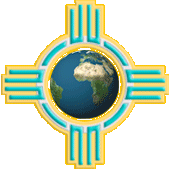Five Worldviews:
Different Ways We See the World
Second Edition
By Dr. Denise R. Ames
Do you feel that the country is irretrievably divided? Do you feel overwhelmed by the many different interpretations of the same events or information? Five Worldviews helps us understand why we see the world so differently? If you are intent on learning about the five worldviews—indigenous, traditional, progressive, globalized, and transformative—and helping to bridge them, this book is for you. We all have a voice and a critical stake in the outcome.
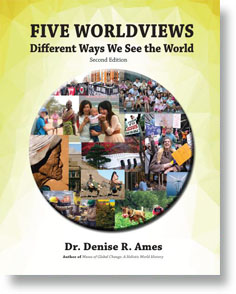
Book
2021, 238 pgs.Illustrated, index, glossary, source notes, and bibliography.
$11.95
E-Reader (PDF)
$7.95
FREE Coming Soon! learning resources for students, educators, discussion groups, and diversity and inclusion workshops.
Dr. Denise R. Ames cares deeply about sharing her work with others. She gives workshops, classes, and presentations on the topic. She finds that most people have become entrenched in their own "bubble" of cultural isolation and strongly feel they are morally right while others are morally wrong. Looking inward to understand one's position and biases is necessary before outward reconciliation can take place. She has found that understanding the cultural divide is imperative before meaningful healing can take place.
Chapter Descriptions
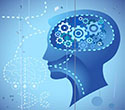 |
Chapter 1. Worldviews: Our Windows to the World Looking at the world today, in what Dr. Ames calls the Global Wave, she has found there are five different and contentious ways of seeing the world or worldviews: indigenous, traditional, progressive, globalized, and transformative. In this introductory chapter worldviews are defined and described, while explaining why they are so entrenched. In a highly interconnected world, it is crucial to understand people with different worldviews. |
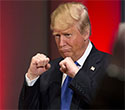 |
Chapter 2. The Modern Wave This chapter explains developments within the Modern Wave, or modern changes that have evolved since around 1500. Modern changes are highlighted in subchapters: modern thought, emergence of a capitalist economic system, development of liberal political institutions, social changes, and cultural developments. Modern changes profoundly altered the way people lived and continue to influence us today. Four of the worldviews—traditional, progressive, globalized, and transformative—have emerged from the Modern Wave. |
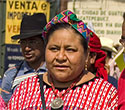 |
Chapter 3. An Indigenous Worldview This worldview is made up of indigenous peoples who are any ethnic group sharing a similar ethnic identity and inhabiting a geographic region with which they have the earliest known historical connection. They are usually a politically underrepresented group whose ethnic identity is different from the nation in power. This chapter highlights economic, social, religious, political, psychological, and environmental differences between indigenous and modern worldviews. The chapter concludes with a story about Roberta Menchu growing up as an indigenous woman in Guatemala. |
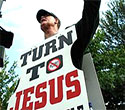 |
Chapter 4. A Traditional Worldview Political conservatives, the populist right, alt right, and religious fundamentalists are part of a traditional worldview. A traditionalist is a person who supports established societal customs and beliefs and does not want to change them or only wants to change them incrementally. While progressives want change, traditionalists want continuity. This worldview encompasses seemingly disparate ideas that often coalesce at election time to put forth candidates who represent different elements of this worldview. |
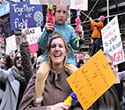 |
Chapter 5. A Progressive Worldview The liberal/progressive left consisting of different groups and interests. Progressive implies progress, their foundational belief is the belief in human perfectibility. To achieve this perfectibility, progressives insist that the chains of religion, family hierarchies and traditions need to be cast off in order for humans to reach their full potential. Moderate liberals embrace reform of institutions, while those on the far left may call for a political revolution to overthrow liberalism and reformulate society into their ideal version. |
 |
Chapter 6. A Globalized Worldview This worldview has greatly changed the landscape in which people around the world work, play, interact, and live their everyday lives. Globalization is a complex phenomenon that interconnects worldwide economic, political, cultural, social, environmental, and technological forces, while transcending national boundaries. It refers to the compression of space and time. Through globalization the world has become a single place that serves as a frame of reference, influencing the way billions of people conduct their lives. |
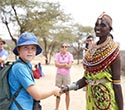 |
Chapter 7. A Transformative Worldview At this point in time, millions of diverse people around the world—transformers—are actively calling for a new worldview. They say a different story is needed to assure the continuation of our human species and life as we know it on Earth. Transformers have a diverse array of thoughts, beliefs, ideas, theories, lifestyles, choices, and actions that defy rigid categorization, but they do share common principles and ideals such as interdependence, sustainability, community, alternative health, nourishing foods, renewable energy, spiritual connections, ceremony, and other life-enhancing ways of living. |
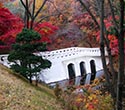 |
Chapter 8. Bridging the Five Worldviews The final chapter explains bound assumptions in each of the five worldviews, which are suppositions that are accepted as true without actual proof. The author has 10 Thoughts for bridging the divide and 15 tips as well. The author wraps up the chapter by making a case for a transformative worldview that she finds has the best values and intentions for providing a future in which sustainability, and personal and global well-being are the goals. |
